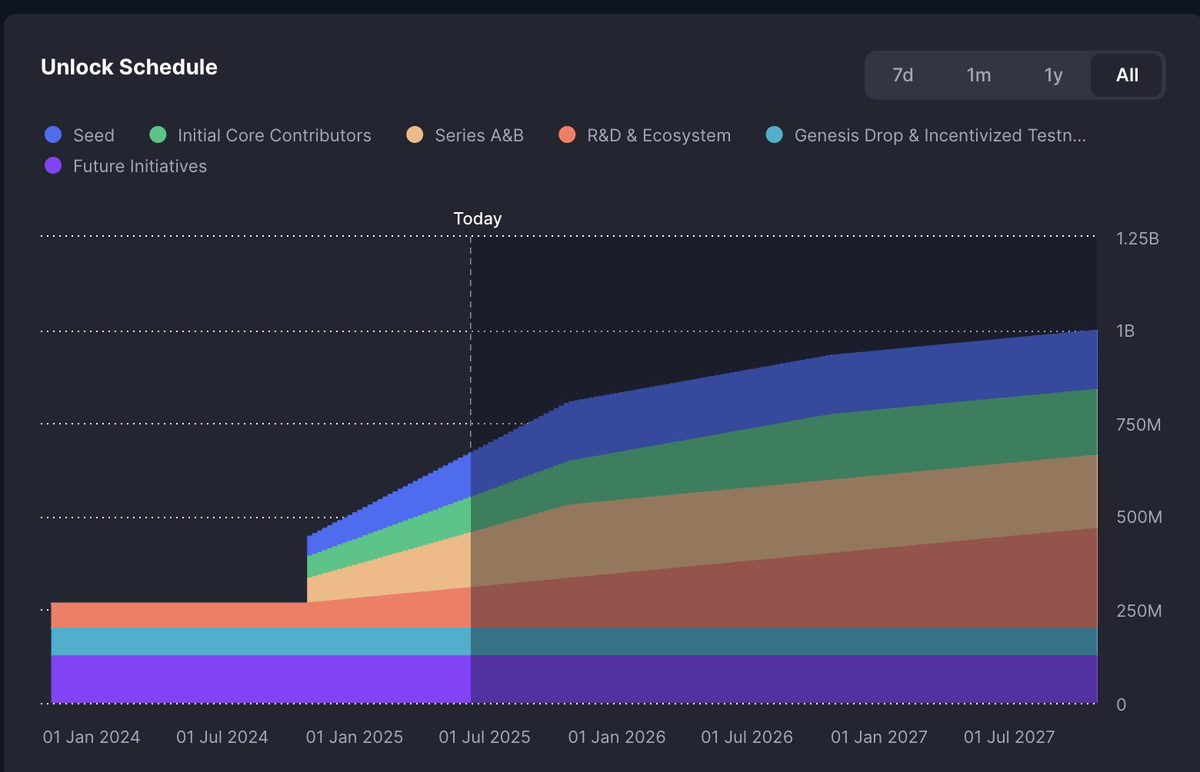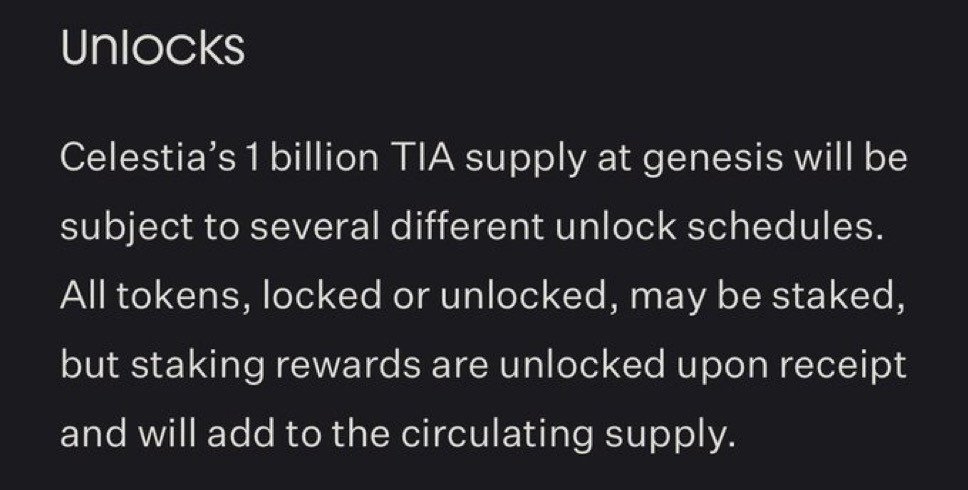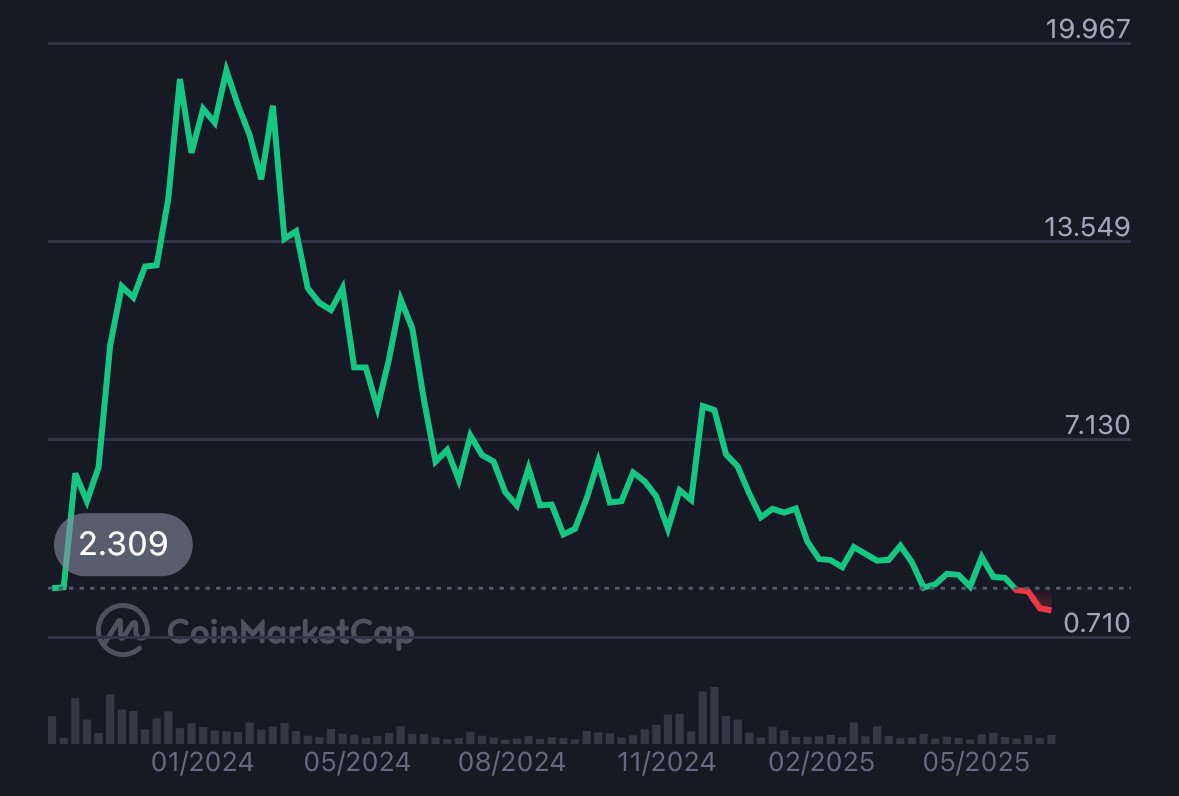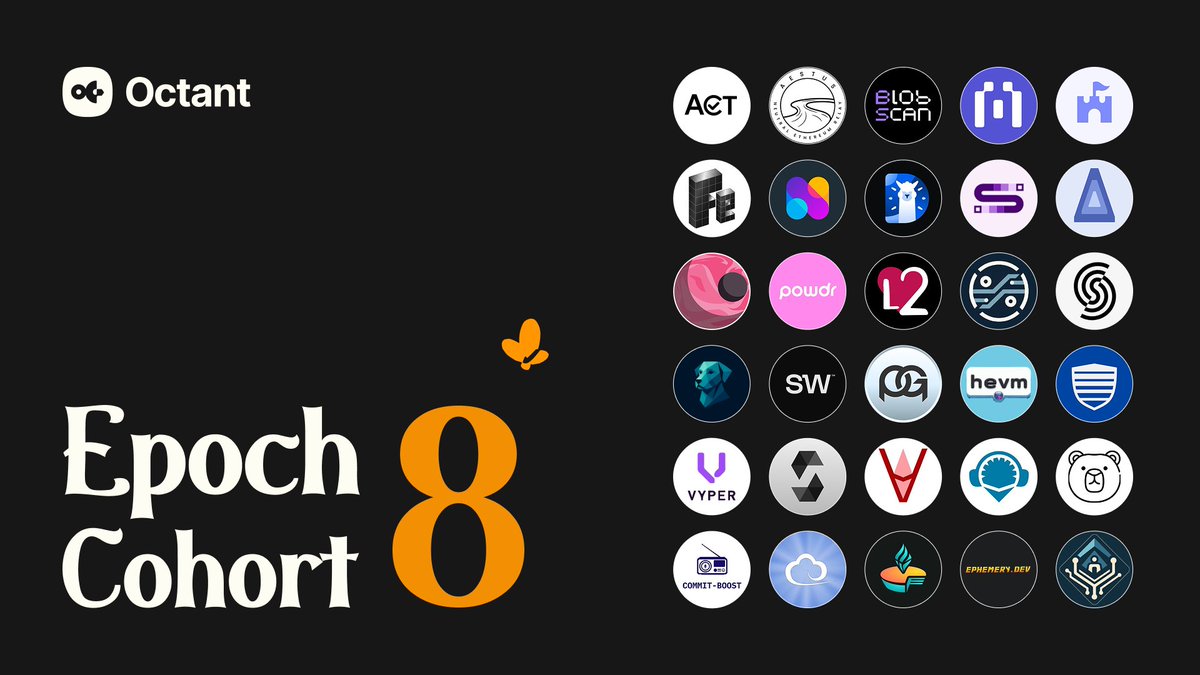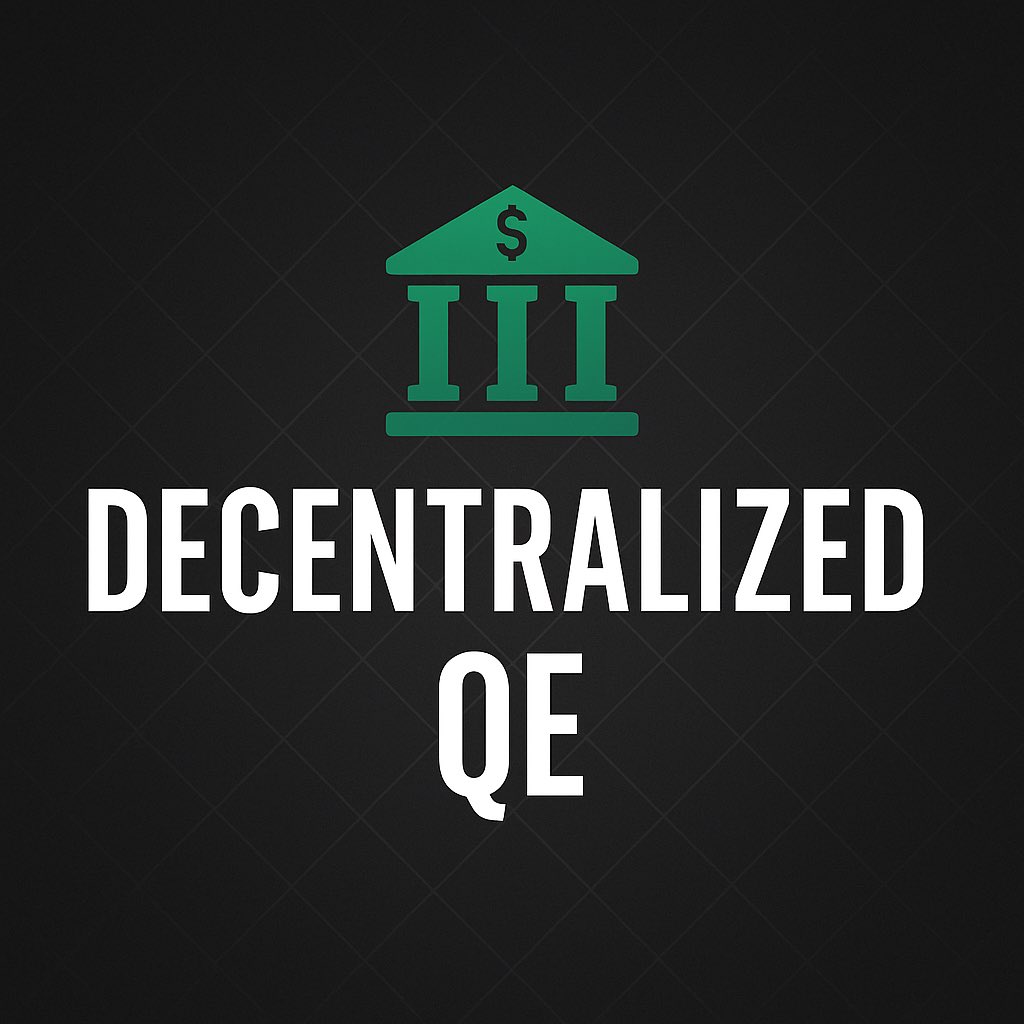Mecanismo de consenso
yearn finance is present on the following networks: Arbitrum, Avalanche, Binance Smart Chain, Ethereum, Fantom, Gnosis Chain, Huobi, Near Protocol, Solana.
Arbitrum is a Layer 2 solution on top of Ethereum that uses Optimistic Rollups to enhance scalability and reduce transaction costs. It assumes that transactions are valid by default and only verifies them if there's a challenge (optimistic): Core Components: • Sequencer: Orders transactions and creates batches for processing. • Bridge: Facilitates asset transfers between Arbitrum and Ethereum. • Fraud Proofs: Protect against invalid transactions through an interactive verification process. Verification Process: 1. Transaction Submission: Users submit transactions to the Arbitrum Sequencer, which orders and batches them. 2. State Commitment: These batches are submitted to Ethereum with a state commitment. 3. Challenge Period: Validators have a specific period to challenge the state if they suspect fraud. 4. Dispute Resolution: If a challenge occurs, the dispute is resolved through an iterative process to identify the fraudulent transaction. The final operation is executed on Ethereum to determine the correct state. 5. Rollback and Penalties: If fraud is proven, the state is rolled back, and the dishonest party is penalized. Security and Efficiency: The combination of the Sequencer, bridge, and interactive fraud proofs ensures that the system remains secure and efficient. By minimizing on-chain data and leveraging off-chain computations, Arbitrum can provide high throughput and low fees.
The Avalanche blockchain network employs a unique Proof-of-Stake consensus mechanism called Avalanche Consensus, which involves three interconnected protocols: Snowball, Snowflake, and Avalanche. Avalanche Consensus Process 1. Snowball Protocol: o Random Sampling: Each validator randomly samples a small, constant-sized subset of other validators. Repeated Polling: Validators repeatedly poll the sampled validators to determine the preferred transaction. Confidence Counters: Validators maintain confidence counters for each transaction, incrementing them each time a sampled validator supports their preferred transaction. Decision Threshold: Once the confidence counter exceeds a pre-defined threshold, the transaction is considered accepted. 2. Snowflake Protocol: Binary Decision: Enhances the Snowball protocol by incorporating a binary decision process. Validators decide between two conflicting transactions. Binary Confidence: Confidence counters are used to track the preferred binary decision. Finality: When a binary decision reaches a certain confidence level, it becomes final. 3. Avalanche Protocol: DAG Structure: Uses a Directed Acyclic Graph (DAG) structure to organize transactions, allowing for parallel processing and higher throughput. Transaction Ordering: Transactions are added to the DAG based on their dependencies, ensuring a consistent order. Consensus on DAG: While most Proof-of-Stake Protocols use a Byzantine Fault Tolerant (BFT) consensus, Avalanche uses the Avalanche Consensus, Validators reach consensus on the structure and contents of the DAG through repeated Snowball and Snowflake.
Binance Smart Chain (BSC) uses a hybrid consensus mechanism called Proof of Staked Authority (PoSA), which combines elements of Delegated Proof of Stake (DPoS) and Proof of Authority (PoA). This method ensures fast block times and low fees while maintaining a level of decentralization and security. Core Components 1. Validators (so-called “Cabinet Members”): Validators on BSC are responsible for producing new blocks, validating transactions, and maintaining the network’s security. To become a validator, an entity must stake a significant amount of BNB (Binance Coin). Validators are selected through staking and voting by token holders. There are 21 active validators at any given time, rotating to ensure decentralization and security. 2. Delegators: Token holders who do not wish to run validator nodes can delegate their BNB tokens to validators. This delegation helps validators increase their stake and improves their chances of being selected to produce blocks. Delegators earn a share of the rewards that validators receive, incentivizing broad participation in network security. 3. Candidates: Candidates are nodes that have staked the required amount of BNB and are in the pool waiting to become validators. They are essentially potential validators who are not currently active but can be elected to the validator set through community voting. Candidates play a crucial role in ensuring there is always a sufficient pool of nodes ready to take on validation tasks, thus maintaining network resilience and decentralization. Consensus Process 4. Validator Selection: Validators are chosen based on the amount of BNB staked and votes received from delegators. The more BNB staked and votes received, the higher the chance of being selected to validate transactions and produce new blocks. The selection process involves both the current validators and the pool of candidates, ensuring a dynamic and secure rotation of nodes. 5. Block Production: The selected validators take turns producing blocks in a PoA-like manner, ensuring that blocks are generated quickly and efficiently. Validators validate transactions, add them to new blocks, and broadcast these blocks to the network. 6. Transaction Finality: BSC achieves fast block times of around 3 seconds and quick transaction finality. This is achieved through the efficient PoSA mechanism that allows validators to rapidly reach consensus. Security and Economic Incentives 7. Staking: Validators are required to stake a substantial amount of BNB, which acts as collateral to ensure their honest behavior. This staked amount can be slashed if validators act maliciously. Staking incentivizes validators to act in the network's best interest to avoid losing their staked BNB. 8. Delegation and Rewards: Delegators earn rewards proportional to their stake in validators. This incentivizes them to choose reliable validators and participate in the network’s security. Validators and delegators share transaction fees as rewards, which provides continuous economic incentives to maintain network security and performance. 9. Transaction Fees: BSC employs low transaction fees, paid in BNB, making it cost-effective for users. These fees are collected by validators as part of their rewards, further incentivizing them to validate transactions accurately and efficiently.
The crypto-asset's Proof-of-Stake (PoS) consensus mechanism, introduced with The Merge in 2022, replaces mining with validator staking. Validators must stake at least 32 ETH every block a validator is randomly chosen to propose the next block. Once proposed the other validators verify the blocks integrity. The network operates on a slot and epoch system, where a new block is proposed every 12 seconds, and finalization occurs after two epochs (~12.8 minutes) using Casper-FFG. The Beacon Chain coordinates validators, while the fork-choice rule (LMD-GHOST) ensures the chain follows the heaviest accumulated validator votes. Validators earn rewards for proposing and verifying blocks, but face slashing for malicious behavior or inactivity. PoS aims to improve energy efficiency, security, and scalability, with future upgrades like Proto-Danksharding enhancing transaction efficiency.
Fantom operates on the Lachesis Protocol, an Asynchronous Byzantine Fault Tolerant (aBFT) consensus mechanism designed for fast, secure, and scalable transactions. Core Components of Fantom’s Consensus: 1. Lachesis Protocol (aBFT): Asynchronous and Leaderless: Lachesis allows nodes to reach consensus independently without relying on a central leader, enhancing decentralization and speed. DAG Structure: Instead of a linear blockchain, Lachesis uses a Directed Acyclic Graph (DAG) structure, allowing multiple transactions to be processed in parallel across nodes. This structure supports high throughput, making the network suitable for applications requiring rapid transaction processing. 2. Event Blocks and Instant Finality: Event Blocks: Transactions are grouped into event blocks, which are validated asynchronously by multiple validators. When enough validators confirm an event block, it becomes part of the Fantom network’s history. Instant Finality: Transactions on Fantom achieve immediate finality, meaning they are confirmed and cannot be reversed. This property is ideal for applications requiring fast and irreversible transactions.
Gnosis Chain – Consensus Mechanism Gnosis Chain employs a dual-layer structure to balance scalability and security, using Proof of Stake (PoS) for its core consensus and transaction finality. Core Components: Two-Layer Structure Layer 1: Gnosis Beacon Chain The Gnosis Beacon Chain operates on a Proof of Stake (PoS) mechanism, acting as the security and consensus backbone. Validators stake GNO tokens on the Beacon Chain and validate transactions, ensuring network security and finality. Layer 2: Gnosis xDai Chain Gnosis xDai Chain processes transactions and dApp interactions, providing high-speed, low-cost transactions. Layer 2 transaction data is finalized on the Gnosis Beacon Chain, creating an integrated framework where Layer 1 ensures security and finality, and Layer 2 enhances scalability. Validator Role and Staking Validators on the Gnosis Beacon Chain stake GNO tokens and participate in consensus by validating blocks. This setup ensures that validators have an economic interest in maintaining the security and integrity of both the Beacon Chain (Layer 1) and the xDai Chain (Layer 2). Cross-Layer Security Transactions on Layer 2 are ultimately finalized on Layer 1, providing security and finality to all activities on the Gnosis Chain. This architecture allows Gnosis Chain to combine the speed and cost efficiency of Layer 2 with the security guarantees of a PoS-secured Layer 1, making it suitable for both high-frequency applications and secure asset management.
The Huobi Eco Chain (HECO) blockchain employs a Hybrid-Proof-of-Stake (HPoS) consensus mechanism, combining elements of Proof-of-Stake (PoS) to enhance transaction efficiency and scalability. Key Features of HECO's Consensus Mechanism: 1. Validator Selection: HECO supports up to 21 validators, selected based on their stake in the network. 2. Transaction Processing: Validators are responsible for processing transactions and adding blocks to the blockchain. 3. Transaction Finality: The consensus mechanism ensures quick finality, allowing for rapid confirmation of transactions. 4. Energy Efficiency: By utilizing PoS elements, HECO reduces energy consumption compared to traditional Proof-of-Work systems.
The NEAR Protocol uses a unique consensus mechanism combining Proof of Stake (PoS) and a novel approach called Doomslug, which enables high efficiency, fast transaction processing, and secure finality in its operations. Here's an overview of how it works: Core Concepts 1. Doomslug and Proof of Stake: - NEAR's consensus mechanism primarily revolves around PoS, where validators stake NEAR tokens to participate in securing the network. However, NEAR's implementation is enhanced with the Doomslug protocol. - Doomslug allows the network to achieve fast block finality by requiring blocks to be confirmed in two stages. Validators propose blocks in the first step, and finalization occurs when two-thirds of validators approve the block, ensuring rapid transaction confirmation. 2. Sharding with Nightshade: - NEAR uses a dynamic sharding technique called Nightshade. This method splits the network into multiple shards, enabling parallel processing of transactions across the network, thus significantly increasing throughput. Each shard processes a portion of transactions, and the outcomes are merged into a single "snapshot" block. - This sharding approach ensures scalability, allowing the network to grow and handle increasing demand efficiently. Consensus Process 1. Validator Selection: - Validators are selected to propose and validate blocks based on the amount of NEAR tokens staked. This selection process is designed to ensure that only validators with significant stakes and community trust participate in securing the network. 2. Transaction Finality: - NEAR achieves transaction finality through its PoS-based system, where validators vote on blocks. Once two-thirds of validators approve a block, it reaches finality under Doomslug, meaning that no forks can alter the confirmed state. 3. Epochs and Rotation: - Validators are rotated in epochs to ensure fairness and decentralization. Epochs are intervals in which validators are reshuffled, and new block proposers are selected, ensuring a balance between performance and decentralization.
Solana uses a unique combination of Proof of History (PoH) and Proof of Stake (PoS) to achieve high throughput, low latency, and robust security. Here’s a detailed explanation of how these mechanisms work: Core Concepts 1. Proof of History (PoH): Time-Stamped Transactions: PoH is a cryptographic technique that timestamps transactions, creating a historical record that proves that an event has occurred at a specific moment in time. Verifiable Delay Function: PoH uses a Verifiable Delay Function (VDF) to generate a unique hash that includes the transaction and the time it was processed. This sequence of hashes provides a verifiable order of events, enabling the network to efficiently agree on the sequence of transactions. 2. Proof of Stake (PoS): Validator Selection: Validators are chosen to produce new blocks based on the number of SOL tokens they have staked. The more tokens staked, the higher the chance of being selected to validate transactions and produce new blocks. Delegation: Token holders can delegate their SOL tokens to validators, earning rewards proportional to their stake while enhancing the network's security. Consensus Process 1. Transaction Validation: Transactions are broadcast to the network and collected by validators. Each transaction is validated to ensure it meets the network’s criteria, such as having correct signatures and sufficient funds. 2. PoH Sequence Generation: A validator generates a sequence of hashes using PoH, each containing a timestamp and the previous hash. This process creates a historical record of transactions, establishing a cryptographic clock for the network. 3. Block Production: The network uses PoS to select a leader validator based on their stake. The leader is responsible for bundling the validated transactions into a block. The leader validator uses the PoH sequence to order transactions within the block, ensuring that all transactions are processed in the correct order. 4. Consensus and Finalization: Other validators verify the block produced by the leader validator. They check the correctness of the PoH sequence and validate the transactions within the block. Once the block is verified, it is added to the blockchain. Validators sign off on the block, and it is considered finalized. Security and Economic Incentives 1. Incentives for Validators: Block Rewards: Validators earn rewards for producing and validating blocks. These rewards are distributed in SOL tokens and are proportional to the validator’s stake and performance. Transaction Fees: Validators also earn transaction fees from the transactions included in the blocks they produce. These fees provide an additional incentive for validators to process transactions efficiently. 2. Security: Staking: Validators must stake SOL tokens to participate in the consensus process. This staking acts as collateral, incentivizing validators to act honestly. If a validator behaves maliciously or fails to perform, they risk losing their staked tokens. Delegated Staking: Token holders can delegate their SOL tokens to validators, enhancing network security and decentralization. Delegators share in the rewards and are incentivized to choose reliable validators. 3. Economic Penalties: Slashing: Validators can be penalized for malicious behavior, such as double-signing or producing invalid blocks. This penalty, known as slashing, results in the loss of a portion of the staked tokens, discouraging dishonest actions.
Mecanismos de incentivo e taxas aplicáveis
yearn finance is present on the following networks: Arbitrum, Avalanche, Binance Smart Chain, Ethereum, Fantom, Gnosis Chain, Huobi, Near Protocol, Solana.
Arbitrum One, a Layer 2 scaling solution for Ethereum, employs several incentive mechanisms to ensure the security and integrity of transactions on its network. The key mechanisms include: 1. Validators and Sequencers: o Sequencers are responsible for ordering transactions and creating batches that are processed off-chain. They play a critical role in maintaining the efficiency and throughput of the network. o Validators monitor the sequencers' actions and ensure that transactions are processed correctly. Validators verify the state transitions and ensure that no invalid transactions are included in the batches. 2. Fraud Proofs: o Assumption of Validity: Transactions processed off-chain are assumed to be valid. This allows for quick transaction finality and high throughput. o Challenge Period: There is a predefined period during which anyone can challenge the validity of a transaction by submitting a fraud proof. This mechanism acts as a deterrent against malicious behavior. o Dispute Resolution: If a challenge is raised, an interactive verification process is initiated to pinpoint the exact step where fraud occurred. If the challenge is valid, the fraudulent transaction is reverted, and the dishonest actor is penalized. 3. Economic Incentives: o Rewards for Honest Behavior: Participants in the network, such as validators and sequencers, are incentivized through rewards for performing their duties honestly and efficiently. These rewards come from transaction fees and potentially other protocol incentives. o Penalties for Malicious Behavior: Participants who engage in dishonest behavior or submit invalid transactions are penalized. This can include slashing of staked tokens or other forms of economic penalties, which serve to discourage malicious actions. Fees on the Arbitrum One Blockchain 1. Transaction Fees: o Layer 2 Fees: Users pay fees for transactions processed on the Layer 2 network. These fees are typically lower than Ethereum mainnet fees due to the reduced computational load on the main chain. o Arbitrum Transaction Fee: A fee is charged for each transaction processed by the sequencer. This fee covers the cost of processing the transaction and ensuring its inclusion in a batch. 2. L1 Data Fees: o Posting Batches to Ethereum: Periodically, the state updates from the Layer 2 transactions are posted to the Ethereum mainnet as calldata. This involves a fee, known as the L1 data fee, which accounts for the gas required to publish these state updates on Ethereum. o Cost Sharing: Because transactions are batched, the fixed costs of posting state updates to Ethereum are spread across multiple transactions, making it more cost-effective for users.
Avalanche uses a consensus mechanism known as Avalanche Consensus, which relies on a combination of validators, staking, and a novel approach to consensus to ensure the network's security and integrity. Validators: Staking: Validators on the Avalanche network are required to stake AVAX tokens. The amount staked influences their probability of being selected to propose or validate new blocks. Rewards: Validators earn rewards for their participation in the consensus process. These rewards are proportional to the amount of AVAX staked and their uptime and performance in validating transactions. Delegation: Validators can also accept delegations from other token holders. Delegators share in the rewards based on the amount they delegate, which incentivizes smaller holders to participate indirectly in securing the network. 2. Economic Incentives: Block Rewards: Validators receive block rewards for proposing and validating blocks. These rewards are distributed from the network’s inflationary issuance of AVAX tokens. Transaction Fees: Validators also earn a portion of the transaction fees paid by users. This includes fees for simple transactions, smart contract interactions, and the creation of new assets on the network. 3. Penalties: Slashing: Unlike some other PoS systems, Avalanche does not employ slashing (i.e., the confiscation of staked tokens) as a penalty for misbehavior. Instead, the network relies on the financial disincentive of lost future rewards for validators who are not consistently online or act maliciously. o Uptime Requirements: Validators must maintain a high level of uptime and correctly validate transactions to continue earning rewards. Poor performance or malicious actions result in missed rewards, providing a strong economic incentive to act honestly. Fees on the Avalanche Blockchain 1. Transaction Fees: Dynamic Fees: Transaction fees on Avalanche are dynamic, varying based on network demand and the complexity of the transactions. This ensures that fees remain fair and proportional to the network's usage. Fee Burning: A portion of the transaction fees is burned, permanently removing them from circulation. This deflationary mechanism helps to balance the inflation from block rewards and incentivizes token holders by potentially increasing the value of AVAX over time. 2. Smart Contract Fees: Execution Costs: Fees for deploying and interacting with smart contracts are determined by the computational resources required. These fees ensure that the network remains efficient and that resources are used responsibly. 3. Asset Creation Fees: New Asset Creation: There are fees associated with creating new assets (tokens) on the Avalanche network. These fees help to prevent spam and ensure that only serious projects use the network's resources.
Binance Smart Chain (BSC) uses the Proof of Staked Authority (PoSA) consensus mechanism to ensure network security and incentivize participation from validators and delegators. Incentive Mechanisms 1. Validators: Staking Rewards: Validators must stake a significant amount of BNB to participate in the consensus process. They earn rewards in the form of transaction fees and block rewards. Selection Process: Validators are selected based on the amount of BNB staked and the votes received from delegators. The more BNB staked and votes received, the higher the chances of being selected to validate transactions and produce new blocks. 2. Delegators: Delegated Staking: Token holders can delegate their BNB to validators. This delegation increases the validator's total stake and improves their chances of being selected to produce blocks. Shared Rewards: Delegators earn a portion of the rewards that validators receive. This incentivizes token holders to participate in the network’s security and decentralization by choosing reliable validators. 3. Candidates: Pool of Potential Validators: Candidates are nodes that have staked the required amount of BNB and are waiting to become active validators. They ensure that there is always a sufficient pool of nodes ready to take on validation tasks, maintaining network resilience. 4. Economic Security: Slashing: Validators can be penalized for malicious behavior or failure to perform their duties. Penalties include slashing a portion of their staked tokens, ensuring that validators act in the best interest of the network. Opportunity Cost: Staking requires validators and delegators to lock up their BNB tokens, providing an economic incentive to act honestly to avoid losing their staked assets. Fees on the Binance Smart Chain 5. Transaction Fees: Low Fees: BSC is known for its low transaction fees compared to other blockchain networks. These fees are paid in BNB and are essential for maintaining network operations and compensating validators. Dynamic Fee Structure: Transaction fees can vary based on network congestion and the complexity of the transactions. However, BSC ensures that fees remain significantly lower than those on the Ethereum mainnet. 6. Block Rewards: Incentivizing Validators: Validators earn block rewards in addition to transaction fees. These rewards are distributed to validators for their role in maintaining the network and processing transactions. 7. Cross-Chain Fees: Interoperability Costs: BSC supports cross-chain compatibility, allowing assets to be transferred between Binance Chain and Binance Smart Chain. These cross-chain operations incur minimal fees, facilitating seamless asset transfers and improving user experience. 8. Smart Contract Fees: Deployment and Execution Costs: Deploying and interacting with smart contracts on BSC involves paying fees based on the computational resources required. These fees are also paid in BNB and are designed to be cost-effective, encouraging developers to build on the BSC platform.
The crypto-asset's PoS system secures transactions through validator incentives and economic penalties. Validators stake at least 32 ETH and earn rewards for proposing blocks, attesting to valid ones, and participating in sync committees. Rewards are paid in newly issued ETH and transaction fees. Under EIP-1559, transaction fees consist of a base fee, which is burned to reduce supply, and an optional priority fee (tip) paid to validators. Validators face slashing if they act maliciously and incur penalties for inactivity. This system aims to increase security by aligning incentives while making the crypto-asset's fee structure more predictable and deflationary during high network activity.
Fantom’s incentive model promotes network security through staking rewards, transaction fees, and delegation options, encouraging broad participation. Incentive Mechanisms: 1. Staking Rewards for Validators: Earning Rewards in FTM: Validators who participate in the consensus process earn rewards in FTM tokens, proportional to the amount they have staked. This incentivizes validators to actively secure the network. Dynamic Staking Rate: Fantom’s staking reward rate is dynamic, adjusting based on total FTM staked across the network. As more FTM is staked, individual rewards may decrease, maintaining a balanced reward structure that supports long-term network security. 2. Delegation for Token Holders: Delegated Staking: Users who do not operate validator nodes can delegate their FTM tokens to validators. In return, they share in the staking rewards, encouraging wider participation in securing the network. Applicable Fees: • Transaction Fees in FTM: Users pay transaction fees in FTM tokens. The network’s high throughput and DAG structure keep fees low, making Fantom ideal for decentralized applications (dApps) requiring frequent transactions. • Efficient Fee Model: The low fees and scalability of the network make it cost-effective for users, fostering a favorable environment for high-volume applications.
The Gnosis Chain’s incentive and fee models encourage both validator participation and network accessibility, using a dual-token system to maintain low transaction costs and effective staking rewards. Incentive Mechanisms: Staking Rewards for Validators GNO Rewards: Validators earn staking rewards in GNO tokens for their participation in consensus and securing the network. Delegation Model: GNO holders who do not operate validator nodes can delegate their GNO tokens to validators, allowing them to share in staking rewards and encouraging broader participation in network security. Dual-Token Model GNO: Used for staking, governance, and validator rewards, GNO aligns long-term network security incentives with token holders’ economic interests. xDai: Serves as the primary transaction currency, providing stable and low-cost transactions. The use of a stable token (xDai) for fees minimizes volatility and offers predictable costs for users and developers. Applicable Fees: Transaction Fees in xDai Users pay transaction fees in xDai, the stable fee token, making costs affordable and predictable. This model is especially suited for high-frequency applications and dApps where low transaction fees are essential. xDai transaction fees are redistributed to validators as part of their compensation, aligning their rewards with network activity. Delegated Staking Rewards Through delegated staking, GNO holders can earn a share of staking rewards by delegating their tokens to active validators, promoting user participation in network security without requiring direct involvement in consensus operations.
The Huobi Eco Chain (HECO) blockchain employs a Hybrid-Proof-of-Stake (HPoS) consensus mechanism, combining elements of Proof-of-Stake (PoS) to enhance transaction efficiency and scalability. Incentive Mechanism: 1. Validator Rewards: Validators are selected based on their stake in the network. They process transactions and add blocks to the blockchain. Validators receive rewards in the form of transaction fees for their role in maintaining the blockchain's integrity. 2. Staking Participation: Users can stake Huobi Token (HT) to become validators or delegate their tokens to existing validators. Staking helps secure the network and, in return, participants receive a portion of the transaction fees as rewards. Applicable Fees: 1. Transaction Fees (Gas Fees): Users pay gas fees in HT tokens to execute transactions and interact with smart contracts on the HECO network. These fees compensate validators for processing and validating transactions. 2. Smart Contract Execution Fees: Deploying and interacting with smart contracts incur additional fees, which are also paid in HT tokens. These fees cover the computational resources required to execute contract code.
NEAR Protocol employs several economic mechanisms to secure the network and incentivize participation: Incentive Mechanisms to Secure Transactions: 1. Staking Rewards: Validators and delegators secure the network by staking NEAR tokens. Validators earn around 5% annual inflation, with 90% of newly minted tokens distributed as staking rewards. Validators propose blocks, validate transactions, and receive a share of these rewards based on their staked tokens. Delegators earn rewards proportional to their delegation, encouraging broad participation. 2. Delegation: Token holders can delegate their NEAR tokens to validators to increase the validator's stake and improve the chances of being selected to validate transactions. Delegators share in the validator's rewards based on their delegated tokens, incentivizing users to support reliable validators. 3. Slashing and Economic Penalties: Validators face penalties for malicious behavior, such as failing to validate correctly or acting dishonestly. The slashing mechanism enforces security by deducting a portion of their staked tokens, ensuring validators follow the network's best interests. 4. Epoch Rotation and Validator Selection: Validators are rotated regularly during epochs to ensure fairness and prevent centralization. Each epoch reshuffles validators, allowing the protocol to balance decentralization with performance. Fees on the NEAR Blockchain: 1. Transaction Fees: Users pay fees in NEAR tokens for transaction processing, which are burned to reduce the total circulating supply, introducing a potential deflationary effect over time. Validators also receive a portion of transaction fees as additional rewards, providing an ongoing incentive for network maintenance. 2. Storage Fees: NEAR Protocol charges storage fees based on the amount of blockchain storage consumed by accounts, contracts, and data. This requires users to hold NEAR tokens as a deposit proportional to their storage usage, ensuring the efficient use of network resources. 3. Redistribution and Burning: A portion of the transaction fees (burned NEAR tokens) reduces the overall supply, while the rest is distributed to validators as compensation for their work. The burning mechanism helps maintain long-term economic sustainability and potential value appreciation for NEAR holders. 4. Reserve Requirement: Users must maintain a minimum account balance and reserves for data storage, encouraging efficient use of resources and preventing spam attacks.
Solana uses a combination of Proof of History (PoH) and Proof of Stake (PoS) to secure its network and validate transactions. Here’s a detailed explanation of the incentive mechanisms and applicable fees: Incentive Mechanisms 4. Validators: Staking Rewards: Validators are chosen based on the number of SOL tokens they have staked. They earn rewards for producing and validating blocks, which are distributed in SOL. The more tokens staked, the higher the chances of being selected to validate transactions and produce new blocks. Transaction Fees: Validators earn a portion of the transaction fees paid by users for the transactions they include in the blocks. This provides an additional financial incentive for validators to process transactions efficiently and maintain the network's integrity. 5. Delegators: Delegated Staking: Token holders who do not wish to run a validator node can delegate their SOL tokens to a validator. In return, delegators share in the rewards earned by the validators. This encourages widespread participation in securing the network and ensures decentralization. 6. Economic Security: Slashing: Validators can be penalized for malicious behavior, such as producing invalid blocks or being frequently offline. This penalty, known as slashing, involves the loss of a portion of their staked tokens. Slashing deters dishonest actions and ensures that validators act in the best interest of the network. Opportunity Cost: By staking SOL tokens, validators and delegators lock up their tokens, which could otherwise be used or sold. This opportunity cost incentivizes participants to act honestly to earn rewards and avoid penalties. Fees Applicable on the Solana Blockchain 7. Transaction Fees: Low and Predictable Fees: Solana is designed to handle a high throughput of transactions, which helps keep fees low and predictable. The average transaction fee on Solana is significantly lower compared to other blockchains like Ethereum. Fee Structure: Fees are paid in SOL and are used to compensate validators for the resources they expend to process transactions. This includes computational power and network bandwidth. 8. Rent Fees: State Storage: Solana charges rent fees for storing data on the blockchain. These fees are designed to discourage inefficient use of state storage and encourage developers to clean up unused state. Rent fees help maintain the efficiency and performance of the network. 9. Smart Contract Fees: Execution Costs: Similar to transaction fees, fees for deploying and interacting with smart contracts on Solana are based on the computational resources required. This ensures that users are charged proportionally for the resources they consume.





